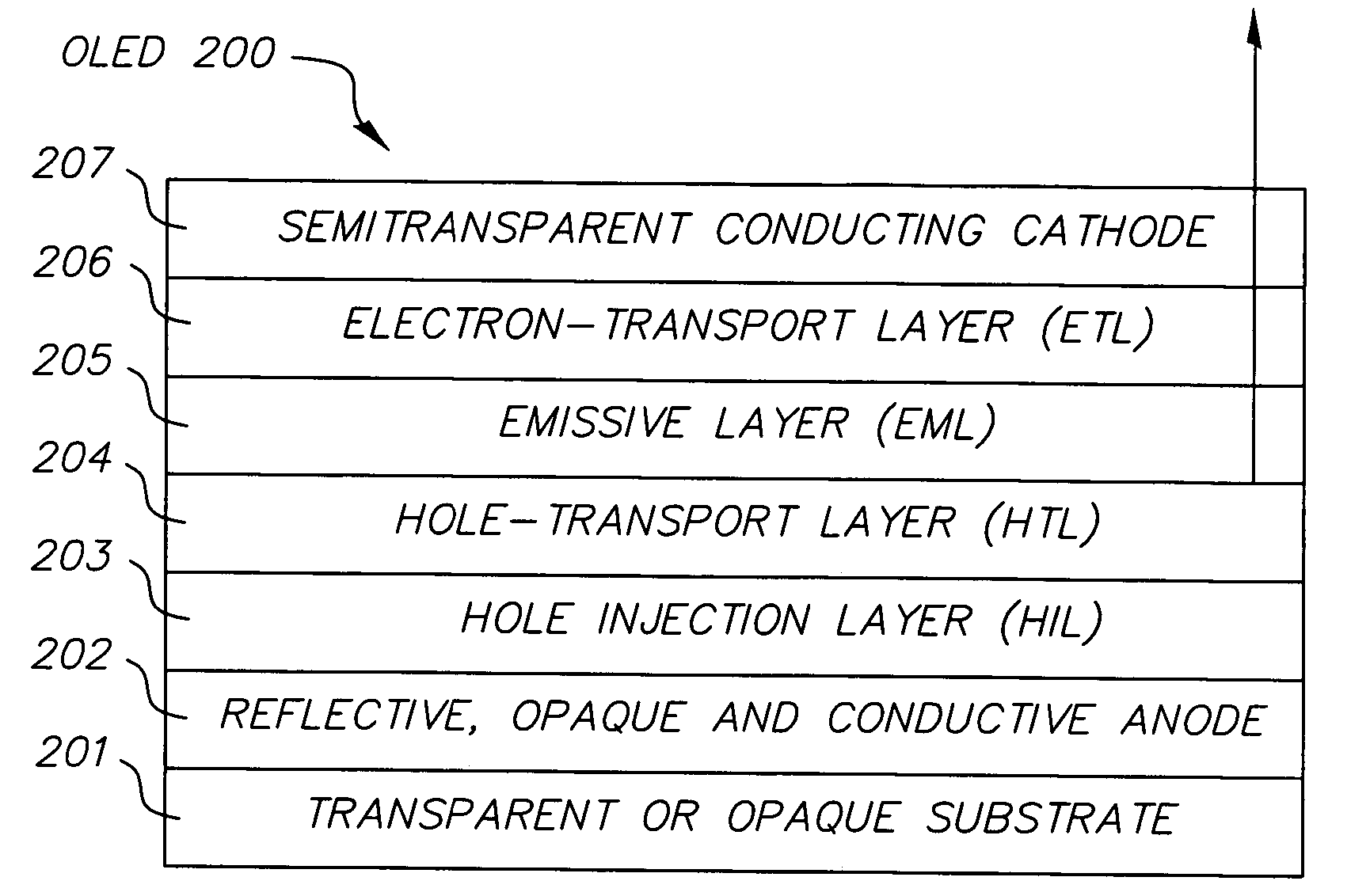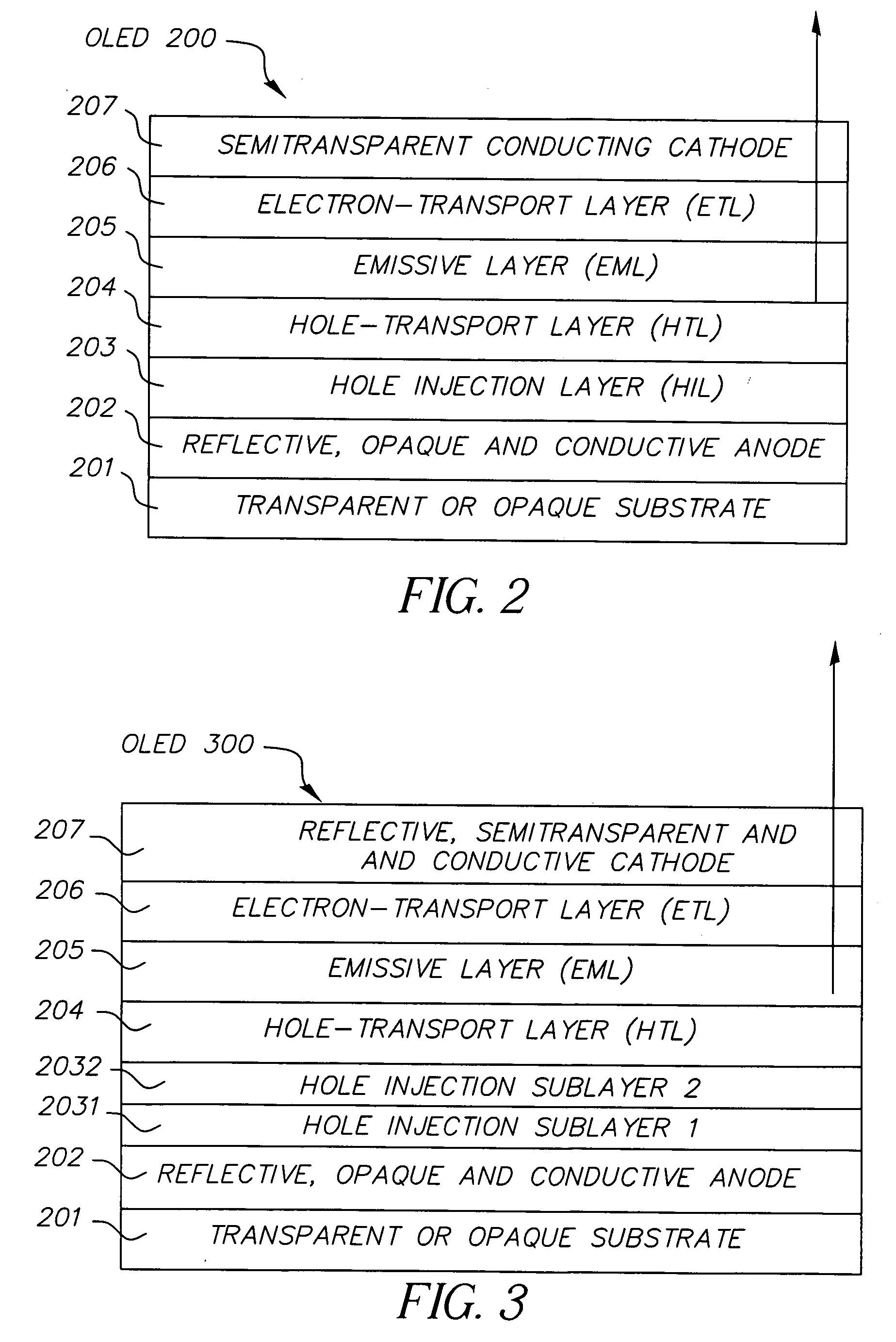Organic light emitting diode with improved light emission through the cathode
a light-emitting diode and organic technology, applied in the direction of discharge tube/lamp details, organic semiconductor devices, discharge tubes, etc., can solve the problems of affecting the aperture ratio and operation stability of the aperture ratio, the inability to easily implement more complex pixel drive circuitry, and the inability to achieve the aperture ratio and operation stability. , the effect of reducing the drive voltag
- Summary
- Abstract
- Description
- Claims
- Application Information
AI Technical Summary
Benefits of technology
Problems solved by technology
Method used
Image
Examples
example 1
[0060] Ag layer, 80 nm thick, to function as the reflective anode was deposited on several glass substrates. On these surfaces prior art OLEDs each having a separate single layer HIL were fabricated. These OLEDs have an identical 200 nm NPB HTL, a 60 nm Alq EML / ETL, a reflective semitransparent, 14nm thick MgAg cathode. The layer structure and performance of the diodes are presented in Table 2
TABLE 2Drive voltageEfficiencyAVIRHalf-lifeOLEDHIL(V)(cd / A)(mV / h)(hr)1A CFx 1 nm8.63.6320061EMoOx 2 nm9.14.15280
The OLEDs each having a different HIL exhibit comparable drive voltage and efficiency, although the OLED 1A having the single-layer CFx HIL shows slightly lower drive voltage and efficiency than the OLED 1B having the single-layer MoOx HIL. The major difference between them is in the operational stability. The OLED 1E exhibit much lower AVIR and significantly longer lifetime and when compared with the OLED 1A, which is otherwise identical in structure. Thus MoOx as a hole injection ...
PUM
 Login to View More
Login to View More Abstract
Description
Claims
Application Information
 Login to View More
Login to View More - R&D
- Intellectual Property
- Life Sciences
- Materials
- Tech Scout
- Unparalleled Data Quality
- Higher Quality Content
- 60% Fewer Hallucinations
Browse by: Latest US Patents, China's latest patents, Technical Efficacy Thesaurus, Application Domain, Technology Topic, Popular Technical Reports.
© 2025 PatSnap. All rights reserved.Legal|Privacy policy|Modern Slavery Act Transparency Statement|Sitemap|About US| Contact US: help@patsnap.com



